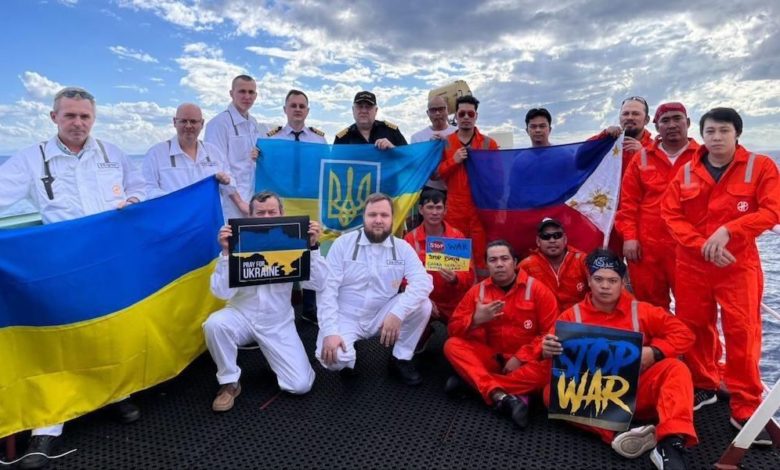Ukrainian seafarers now back in labour force

Ukrainian seafarers have largely returned to international shipping thereby restoring balance in crew availability, reports Danica Crewing Specialists on the anniversary of the war in Ukraine which impacted crewing rotations and seafarer welfare on a huge scale.
Demonstrating their resilience in the face of horrendous adversity, Ukrainian seafarers and their families are now mostly based in other European countries, and many are cutting short their shore leave time, meaning crew levels are now back to where they were before the Russian invasion.
Henrik Jensen, CEO of Danica Crewing Specialists, outlined how the crewing situation has evolved over the past year: “When the war broke out about 60% of Ukrainian seafarers were onboard merchant ships. A few wanted to return home immediately but the majority stayed onboard and when their tenure came to the planned end, providing their families were safe, they asked to stay longer to guarantee an income.
“Over the summer this situation changed as seafarers were reunited with their families who had fled to other countries, and at this point many of them extended their shore leave breaks, creating a brief shortage of relievers.
“However, the situation has now changed again and since the autumn we have seen a balance establish between supply and demand for Ukrainian seafarers.”
Jensen explained that the costs of re-establishing family life from scratch in a new country, coupled with the increased cost of living in EU countries and the UK, means Ukrainian seafarers now seek to return to paid work at sea sooner.
“Previously most Ukrainian senior officers were on a four months on/off rotation, but now they are more likely to serve five months onboard and only two months at home, and these patterns are similar for other ranks too. The result of this is that each seafarer spends more time at sea and therefore this has compensated for any seafarers who are still not able to leave Ukraine. I anticipate that this crewing pattern will remain in place for some time to come,” he said.
As the one-year anniversary of the Russian invasion approaches, there are still a reported 331 seafarers of multiple nationalities onboard 62 ships stranded in Ukrainian ports.
More than 30 shipping organisations and companies are urging the United Nations to prioritise the immediate release of seafarers and ships trapped in Ukraine.
In an open letter to Secretary General Antonio Guterres, 32 signatories, including the International Chamber of Shipping (ICS), European Community Shipowners’ Association (ECSA), Bimco, and various other organisations and shipowners called on the UN to use its “diplomatic influence to address this matter urgently”.

Замечательный, оптимистичный очерк.. а про тех моряков, которые вернулись в Украину и стали заложниками своей страны, без возможности хоть как-то заработать на кусок хлеба вы молчите?! И так уже почти ГОД!!! Как же так жить? Правовое , демократическое государство , за которое мы боремся?!!
Why doesn’t Zelensky allow stranded seafarers to leave his poor country?
I can understand that Ukrainian seamen are potential cannon fodder and aren’t allowed to move out but what’s the problem with foreigners?
Or this article is just some media support for negotiations of new grain deal in March?